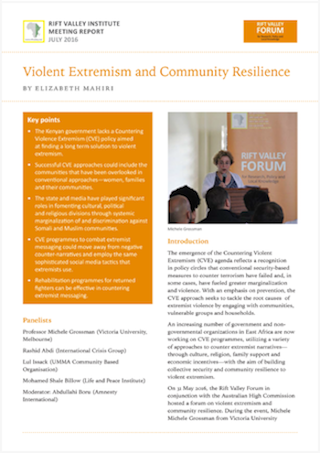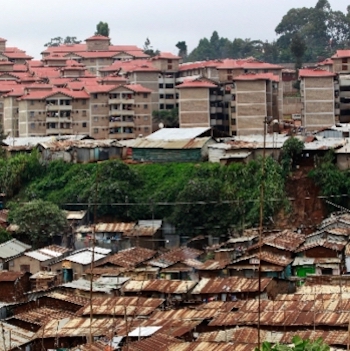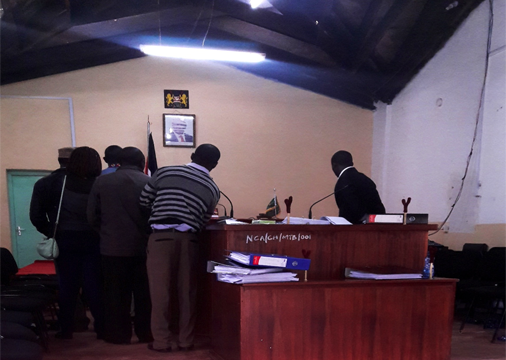Dividing Communities in South Sudan and Northern Uganda
In September 2014, a conflict erupted between South Sudanese and Ugandans in the borderlands of Kajokeji County, South Sudan and Moyo District, Uganda. Several people were killed, many more injured and thousands displaced. In Dividing Communities in South Sudan and Northern Uganda, the authors argue that the boundary dispute is not simply the result of a […]
Violent Extremism and Community Resilience

Key points The Kenyan government lacks a Countering Violence Extremism (CVE) policy aimed at finding a long term solution to violent extremism. Successful CVE approaches could include the communities that have been overlooked in conventional approaches—women, families and their communities. The state and media have played significant roles in fomenting cultural, political and religious divisions […]
Coal: Development, energy and employment
The mining of Kenya’s coal deposits has started in earnest in line with Kenya’s aspiration to become a middle-income industrialized country by the year 2030. A key element in reaching this goal is the generation of energy to power industries and making electricity more widely accessible to the population in Kenya. While the government is […]
Cultural Identity: Kenya and the coast
During 2010 and 2011, a secessionist campaign led by a group calling itself the Mombasa Republican Council (MRC) dominated debates about coastal politics. As a result of local grievances, the MRC’s call for secession attracted a degree of public sympathy on the coast. Debates emerged that portrayed two contrasting images of Kenya: the inclusive nation […]
One slum, three upgrades

In 2004, the Kenyan government in collaboration with UN-HABITAT launched the Kenya Slum Upgrading Programme (KENSUP), which aims to improve the living conditions of about 60 per cent of the country’s urban population by 2020. Kibera, the largest informal settlement in the country, is a pilot project under this programme. Other major development projects in […]
Big Barrier: Youth unemployment at the coast
In Kenya, 80 per cent of the unemployed are believed to be below the age of 35. The rate of unemployment in Mombasa, Kenya’s second largest city and home to the region’s largest port, is estimated to be 44 per cent. The Kuza project’s definition of unemployment includes those earning less than KES 10,000 (USD […]
Violent Extremism in Kenya
Kenya, along with the rest of the world, has struggled to craft a response to tackling violent extremism, especially since militarist groups have been quick to adjust their recruitment methods to adapt to such responses. Widespread narratives seem to suggest that violent extremism has international origins and is inherently a non- Kenyan problem. Yet one […]
Women in politics in Kenya

When Kenyans voted in favour of a new constitution in the 2010 referendum, they endorsed many considerable changes to the country’s political, legal and institutional landscape. This included the introduction of a quota system intended to limit the domination of political offices by one single gender. Known as the Gender Principle or Rule, Article 27(8) of […]
Strengthening the leadership and influence of women in politics in Kenya
Kenya’s 2010 Constitution introduced a quota system designed to increase the representation of women in elective and appointive bodies of government. Article 27(8)—known as the Gender Principle—states that ‘not more than two thirds of the members of elective bodies shall be of the same gender’. The 2013 elections resulted in the highest number of women […]
Eldoret, a city on the move
The Rift Valley Institute’s Rural to urban mobility project aims to better understand the dynamics of rural to urban migration and the ways in which this phenomenon impacts the social and infrastructural fabric of cities in East Africa. It is conducted within the framework of the Research and Evidence Facility on Migration in the Horn of Africa, supported […]
